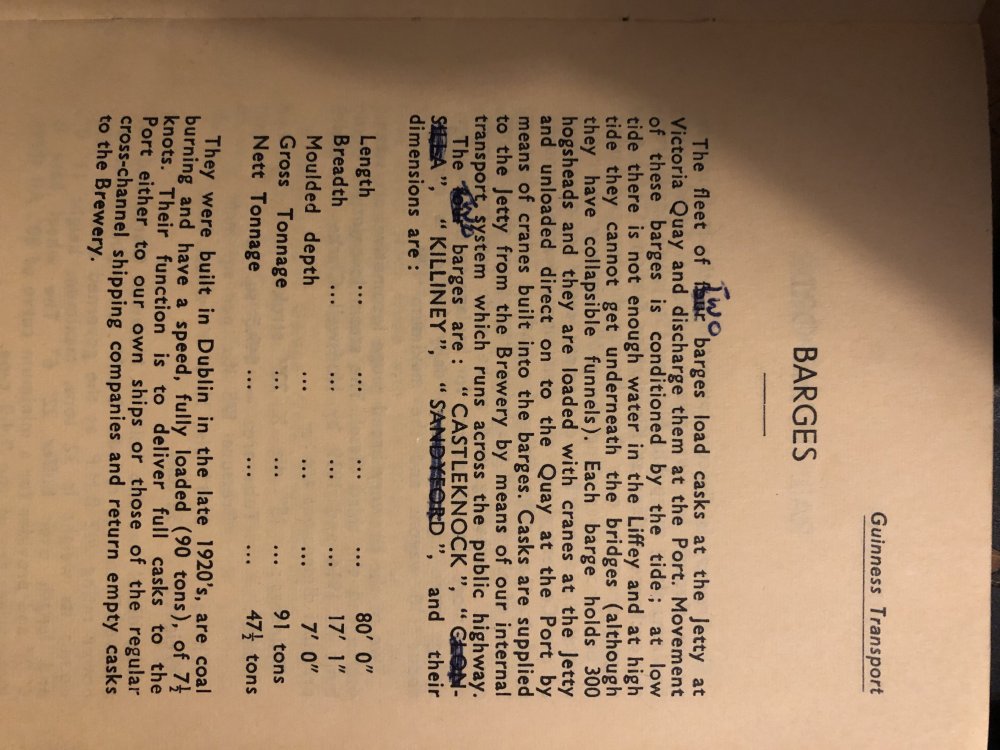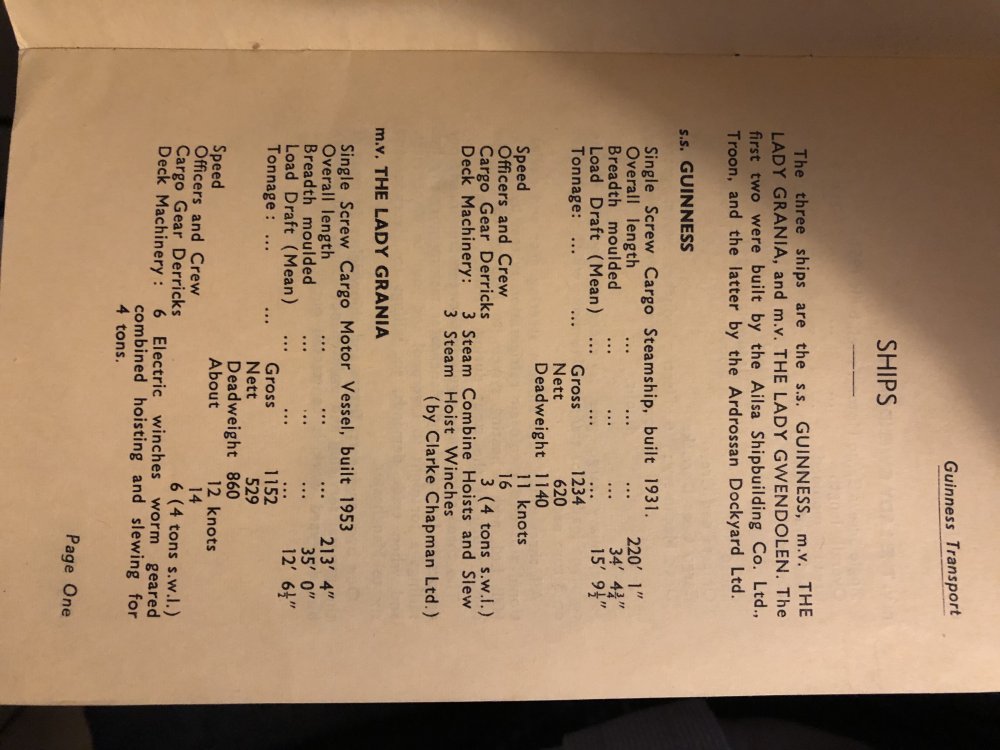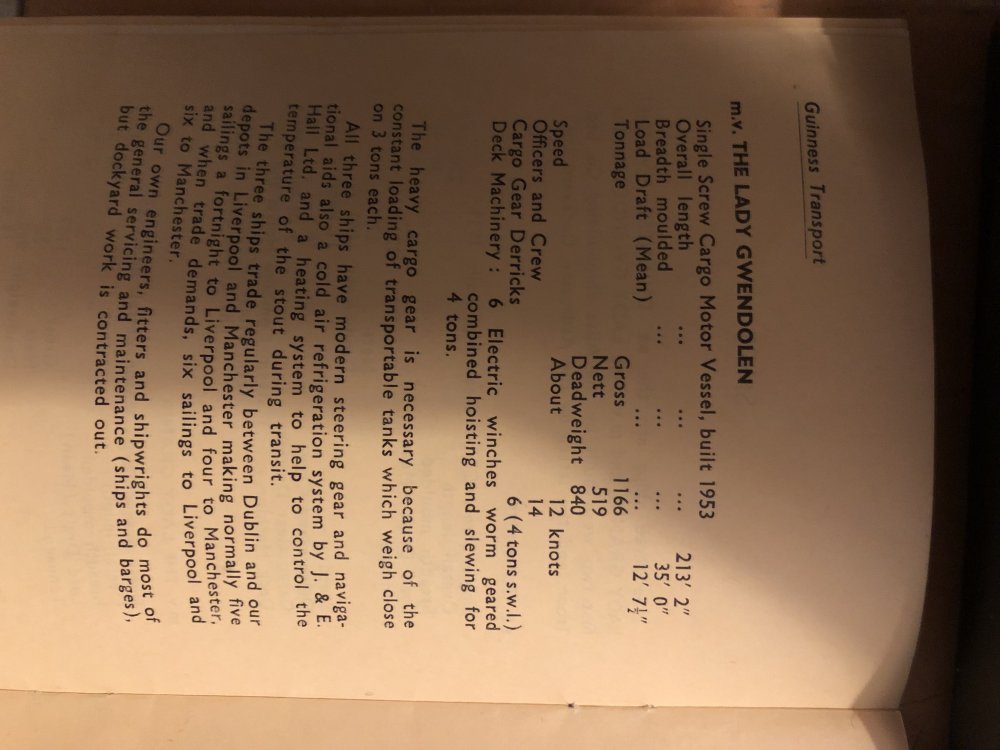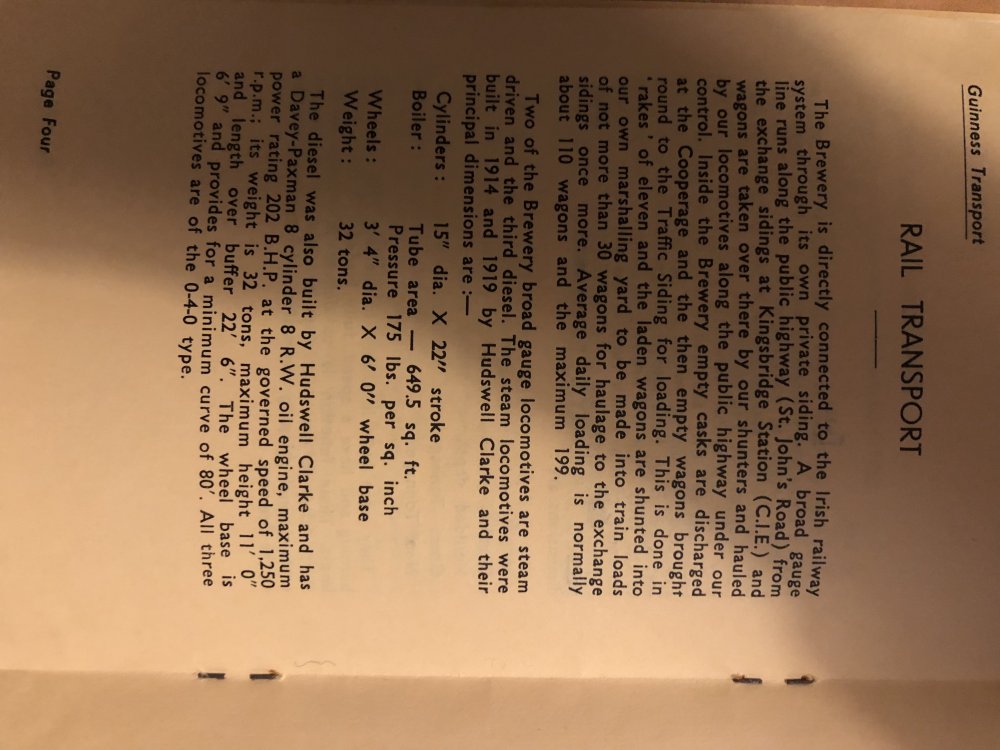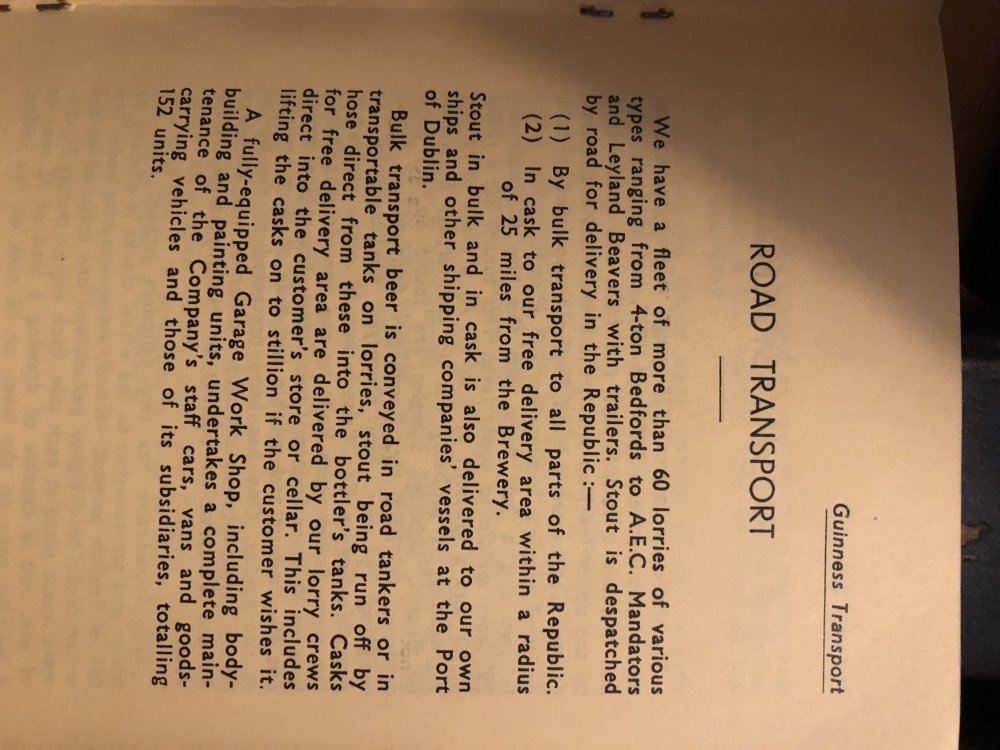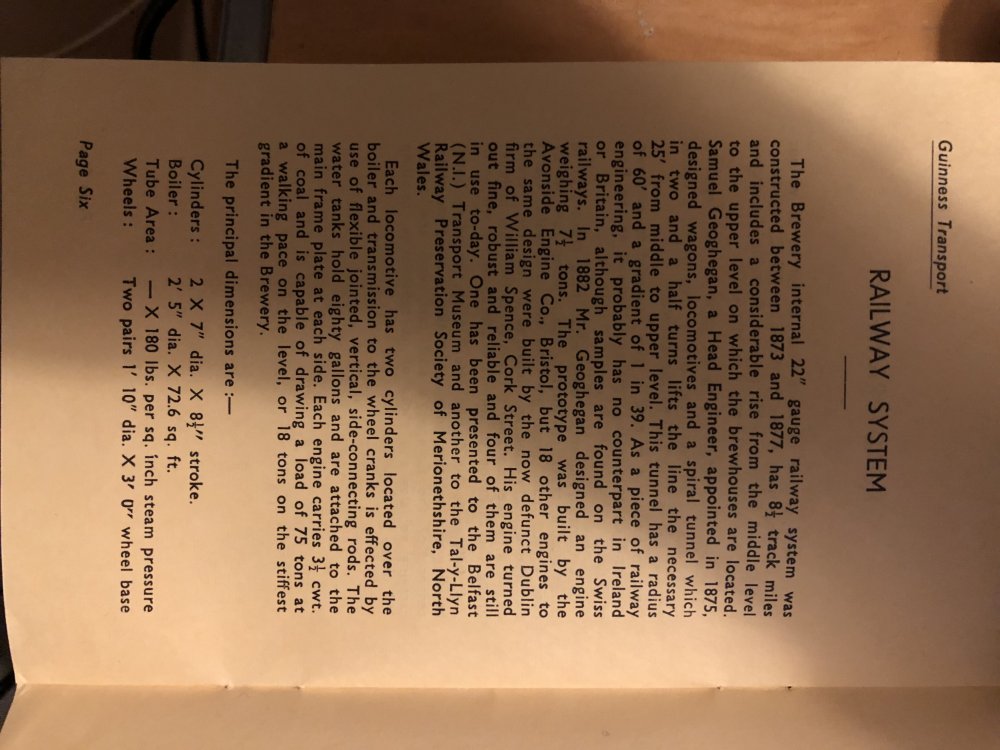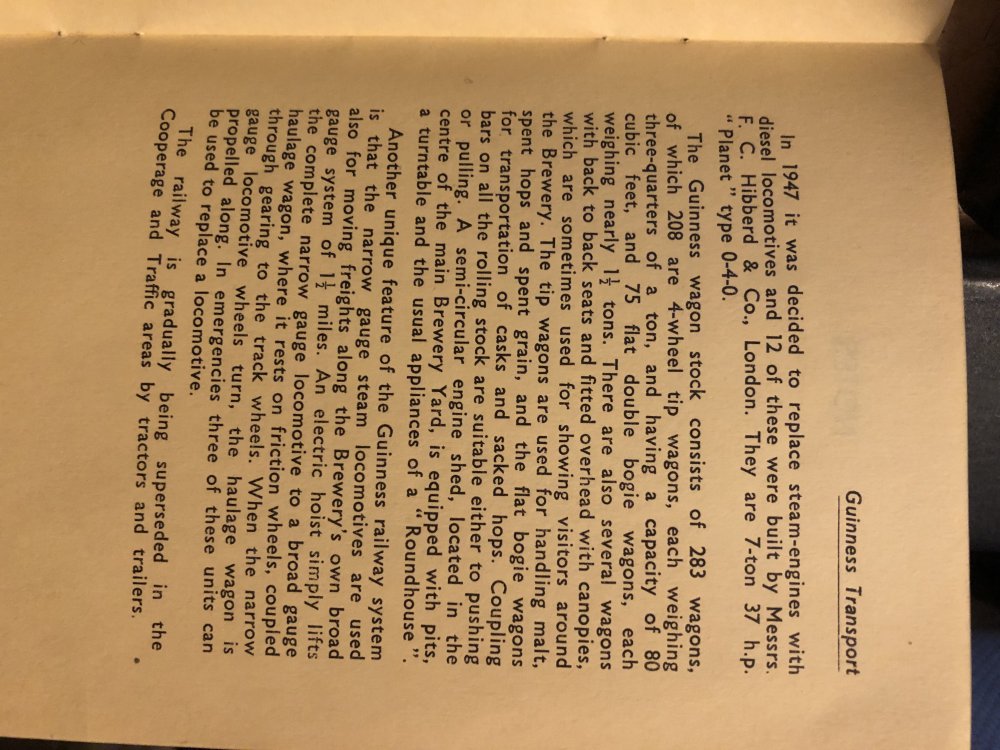-
Posts
15,824 -
Joined
-
Last visited
-
Days Won
393
Content Type
Profiles
Forums
Events
Gallery
Blogs
Store
Community Map
Everything posted by jhb171achill
-
Correct - it was taken away to Dublin, presumably for export. An ancestor of mine was a manager in the Deerpark mines nearby.....
- 5 replies
-
- coal
- castlecomer
-
(and 2 more)
Tagged with:
-
That looks truly superb. Love the mural of Ben Bulben behind it. It really captures the essence of remote termini like that. The weed-strewn track just brings me back to the remoter branch-line visits in the earlier 1960s, which I just about recall, and the weighbridge and bicycle are just the bees knees. Note taken to shtick a bicycle on my own thing when it's ready. Railway staff didn't generally own cars back then, so they came to work o a bike or on foot. The porter delivered parcels off trains by bike. jhb171Senior recalled arriving in some place in the Backwaters & Boondocks of the Shticks in the 1930s, and watching the driver unload his OWN bike from the guard's van so that he could cycle home!
-
Not so much mix and match, as all of these had their own well-defined liveries. I can't help with exact details, but I'm just mentioning that there have been three distinct shades of green for An Post. They used a dark leaf green for vans from 1920-something up to the mid 1970s, when they started using orange and white for a while on vans, with a lighter green on letter boxes, and green & cream phone boxes. More recently, a lighter green replaced within the last 18 months or so by whatever rainbow of shades they use now. So, for post office vans, it's important to know first of all what period you want to cover.
- 1 reply
-
- 1
-

-
I’d say they came in as chassis..... bodies built by An Post, same as CIE building bus bodies at Spa Road.
-
That’s a completely new one to me - many thanks! I’ve a notion I saw a pic of two Hunslets double-headed on it at Castlerock one time - would that be correct?
-
The one which appears to be "topped and tailed" is most likely something to do with a breakdown. I doubt very much if they ran like this (both powered - no suitable control gear) - it's probable that one loco is towing the other dead.
-
Fair enough. Yes, it looks more like a toy. Better to repaint a 4mm scale model!
-
So, unsuitable for 00 scale! Pity. Nice looking little thing, which apart from the fact that I remember them, would look well outside a railway station building on a layout.
-
Does anybody know what scale this thing is? You can buy them from An Post..... http://www.irishstamps.ie/Shop/p-830-model-van.aspx
-
The caption on the pic (which I lifted off some website) said it was taken in 1993 - caption clearly wrong in that case.....
-
Any idea who copied who? Who had it first? The Irish version dates back to 1987.
-
I, too, saw a single 121 on a fert once, but only once; it would have been an exceptionally rare one indeed. In terms of livery queries earlier, as seen in photos, yes, BnT locos ran with them. In fact, when the ferts were introduced, the majority of locomotives were still black'n'tan.
-
What's this all about? In the Algarve....
-
Ah, the pixels. We were infested with them too. You can get some sort of spray which kills them off, I believe. It's their chattering at night that does my head in.
-
Another from the Catacombs: the Guinness transport system.
jhb171achill replied to jhb171achill's topic in General Chat
I had another look at it. It was printed by their own printing works - where they made their bottle labels. The print font used was common enough back then; before the days of the all-encompassing "arial" which seems to have pervaded just about everything, worldwide, from the late 1960s. It actually fell out of a book that I was consulting for something else. I have hundreds of books, and even more railway documents and timetables, and it's amazing what pops out of them now and again - I found an original 1947 GNR "Enterprise" brochure last week! I had forgotten I had it, as I sold three or four that I DID know I had, some years ago....! It's coincidental in this case. -
Caldercraft Talacre - Steam Ship Finished.
jhb171achill replied to Georgeconna's topic in Aviation & Maritime Modelling
Wow!!!! That is a VERY nice-looking beast! -
Indeed. It is reminiscent of the even crazier scheme to build the Ulster & Connaught Railway in 1909. This would have had a railway line running from - wait for it - Greenore - to CLIFDEN!!! Over 200 miles of NARROW GAUGE track, serving not one single solitary place of any significance or size along its entire route, except Newry. Tempting though it is to any railway historian, it is a good thing it was never built.
-
Superb. Lately, I have come across another example of what is almost certainly original GSR / CIE grey paint, and again, what you're doing looks very much the part. A bit darker than current 071 grey, albeit frequently darker LOOKING in traffic mixed with soot and oily rags! While my memories of the CIE area at the end of steam days are sparse, I am aware from photos how absolutely filthy locomotives were allowed to get in the early 1960s. Fast forward to NIR in the late 60s, and 1970, and they're as bad if not worse. I watched a "Jeep" running round a ballast train in Lisburn towards the end (must have been Feb / Mar 1970 - exactly fifty years ago!) and I thought "that's what they'd look like if they had been painted a plain colour", as you couldn't see ANY of the lining or old UTA crest...... I witnessed the dying days of steam in Austria, India, South Africa, Zimbabwe and Indonesia in the late 1970s, and even the very last few locos just kept in reserve for the odd extra goods train, shunting, or to cover a diesel failure, were always kept immaculately clean! Most of mainland Europe the same although some Spanish examples were tatty - though nowhere near as bad as ours! British ones got filthy too......
-
I'm pretty sure this thing was a conversion, though I'm not sure whether this happened in DSER or GSR days. It certainly has the body profile of a DSER vehicle, and one can just about make out a "D" after the number. I do know that the DWWR had a clerestorey-roofed dining car which survived in that form into CIE times, but was very heavily rebuilt. This may be it - I THINK it was No. 12, but I'd have to check - that would make it 12D at this stage. I never saw any evidence of HOW it was rebuilt, and to what purpose. Could this be the answer? If so, it's lost its clerestorey roof for one thing.
-
How would she react to bubbles?
-
I blame the Belgians. And the Maltese.
-
I would echo echo echo echo echo .... what Leslie says. Documentary stuff is easily accessible in IRRS towers at the old goods office in Heuston. (I recall watching an E shoving a corrugated open truck off the end of a siding just outside the building - where the car park is now - about 1974....) Ooooops! (Maybe the driver had been in Ned Rea’s - anyone remember it?)
-
Whole thing went well; but the after-party must proceed. .....Yes, Guinness please, thanks.
-
The standard on the new layout is VERY high, as it should be. Hats off to “Baseboard Dave” Lindfield of these lands. Saw it on the lunchtime news also, as mentioned by Broithe......
.png.c363cdf5c3fb7955cd92a55eb6dbbae0.png)





